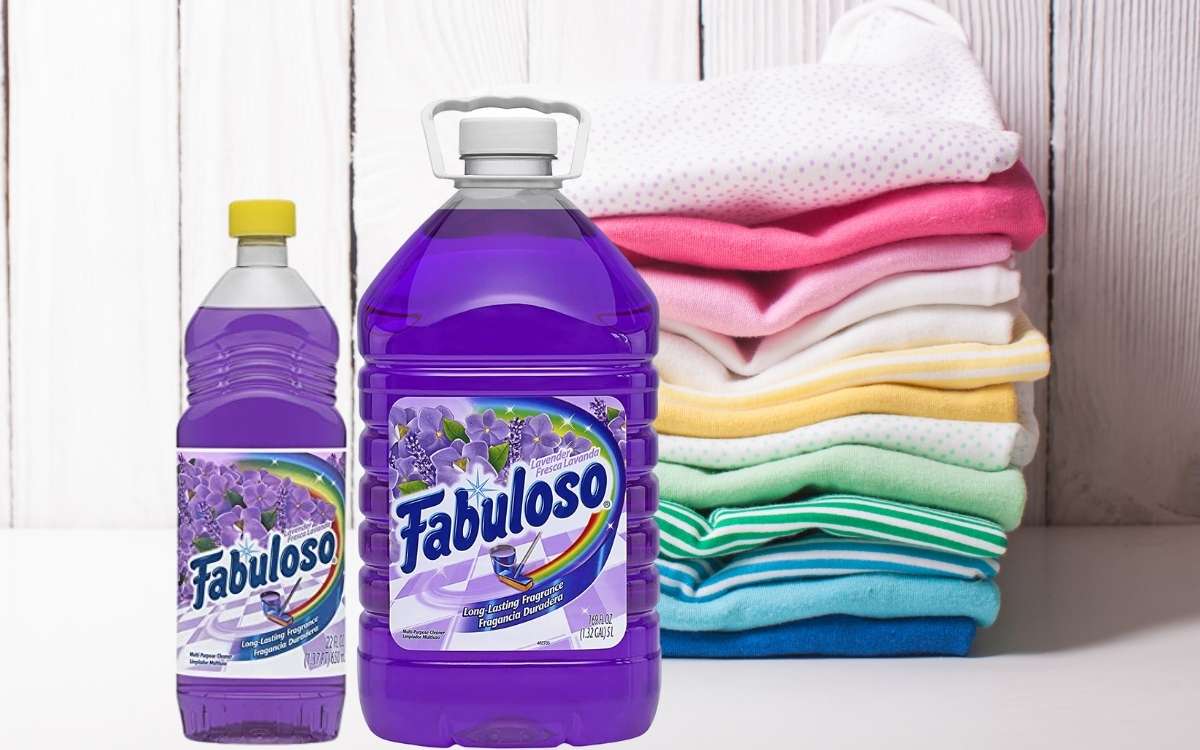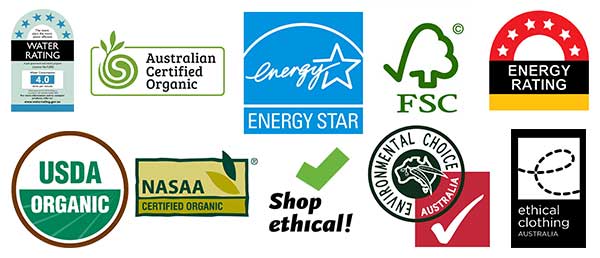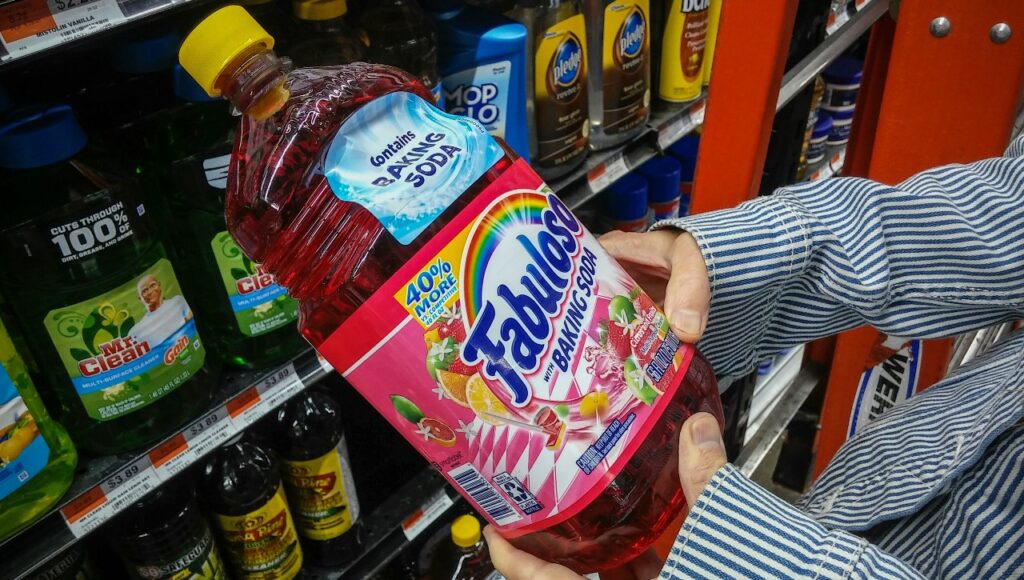Last Updated on June 3, 2024 by Annie Baldwin
Fabuloso is a popular household cleaning product known for its great cleaning power and pleasant fragrances.
But is it really environmentally friendly?
Let’s take a closer look.
Is Fabuloso Environmentally Friendly?

No, Fabuloso cleaners are not environmentally friendly.
The products contain chemicals that can pollute waterways, harm aquatic life, and irritate skin.
The brand also lacks certification from eco-friendly standard organizations.
Key Points
- Fabuloso lacks certification from eco-friendly standards like Green Seal and EcoLogo
- The products contain preservatives and fragrances that can irritate skin
- Ingredients may be harmful to aquatic life and pollute waterways
Our Opinion
In my opinion as a green living expert, Fabuloso cleaners fall short as an environmentally friendly option.
While they may be convenient and budget-friendly, the lack of third-party eco-certifications, transparency about ingredients, and potential to pollute waterways are concerning.
I would recommend consumers look for plant-based cleaners certified by Green Seal or EWG Verified if green living is a priority.
Fabuloso has room for improvement to reformulate its products to be safer and more sustainable.
Is Fabuloso Green-Certified?

Unfortunately, Fabuloso products are not certified as green cleaners by independent eco-labels like Green Seal or EcoLogo. This means the products haven’t been independently verified to meet strict standards for reducing health and environmental impacts.
Some specific concerns about Fabuloso ingredients include:
- Preservatives that may damage DNA and cause skin irritation
- Packaging that is not child resistant, posing safety risks
- Ownership by a parent company that still tests on animals
- Recalled products with inadequate preservatives and bacteria risk
While Fabuloso is septic-safe for disposal and excels at cleaning, it contains chemicals that can harm aquatic life and the environment. Overall, Fabuloso is not considered an eco-friendly product despite some recent improvements.
What Ingredients Are in Fabuloso?
Fabuloso contains a mix of cleaning agents, preservatives, fragrances, and dyes. Some specific ingredients include:
- Alkyl dimethyl benzyl ammonium chloride – A disinfectant and surfactant
- Fragrance – Proprietary mix of fragrances
- Dye – Provides color
- Ethylene glycol monobutyl ether – A solvent
- Isopropyl alcohol – Another solvent
- Sodium hydroxide – Helps adjust pH
While Fabuloso discloses its full ingredient list as required, it does not provide a breakdown of the specific percentages of each ingredient. This makes it difficult to fully evaluate the product’s safety and eco-friendliness.
Some potentially concerning ingredients include fragrances, which can irritate skin and airways, and ethylene glycol monobutyl ether, which may have reproductive and developmental effects. Overall, the ingredients point to Fabuloso not being the most environmentally friendly option on the market.
Like many conventional cleaning products, Fabuloso does contain some chemical ingredients that may be harmful to human health and the environment when exposure is high or prolonged. However, when used as directed, the risk of harmful exposure is low.
In particular, ethylene glycol monobutyl ether (also known as 2-Butoxyethanol) has been identified as a chemical of concern. Studies have linked it to red blood cell damage when inhaled or absorbed through the skin over long periods. The EPA has also labeled it as a hazardous air pollutant. However, the concentrations found in Fabuloso are low and not thought to pose a risk with typical household use.
Other ingredients like fragrances, preservatives, and dyes may cause irritation or allergic reactions in some individuals but are not considered highly toxic. The safety data sheets classify Fabuloso products as mild skin and eye irritants, but not corrosive or severely toxic.
While not completely free of chemicals of concern, Fabuloso products contain them at low enough levels to be safe when used as directed. Those with chemical sensitivities may still wish to be cautious or opt for plant-based cleaners. However, for most households, occasional use of Fabuloso does not pose a significant health risk.
Is Fabuloso Biodegradable?

When it comes to biodegradability, the picture is a bit murky for Fabuloso products. Unlike some green cleaners like OxiClean, Fabuloso does not prominently advertise itself as biodegradable or easily broken down in the environment.
Digging into the safety data sheets, most Fabuloso formulations list over 60% of ingredients as biodegradable. However, some key ingredients like fragrance compounds and preservatives may not readily break down.
One concerning chemical often used in Fabuloso is ethylene glycol monobutyl ether (2-Butoxyethanol). While it will eventually biodegrade, it is slow to break down in water and soil. It can persist in groundwater for over a month.
While Fabuloso liquids may partially biodegrade with water treatment, some ingredients clearly persist. And the plastic packaging does not break down easily at all. So while Fabuloso is not as eco-friendly as some plant-based cleaners, it appears to biodegrade better than many conventional heavy-duty cleaners.
Consumers who want a more biodegradable option may wish to choose cleaners certified by EcoLogo, Green Seal, or other eco-labels. But Fabuloso is likely no worse for aquatic life than typical cleaning products when used correctly.
Does Fabuloso Have Environmentally Friendly Packaging?
When it comes to packaging, Fabuloso still has room for improvement. The plastic bottles are not made from recycled materials or designed for easy recycling.
Fabuloso does seem to be taking small steps though. For example, some product labels now state the bottles are made with 25% post-consumer recycled plastic. A good start, but more could be done.
The lids on Fabuloso bottles are at least now child-resistant, preventing accidental exposure. The labels clearly mark ingredients that could harm the environment when improperly disposed of.
However, a major area for improvement is reducing plastic waste overall. Fabuloso could consider reusable or refillable packaging, concentrates that require less plastic, or even cleaning product subscriptions and refills by mail. This would lessen the impact of single-use plastics.
While not perfect, Fabuloso shows effort to reduce packaging waste and improve recycling. With consumer pressure, they may continue improving in an eco-friendly direction. But for now, their bottles remain standard plastic without special environmental considerations.
FAQ
Are Fabuloso Products Eco-Friendly?
No, Fabuloso products are not certified as eco-friendly cleaners by third-party organizations like Green Seal or EcoLogo. The ingredients and manufacturing processes have not been verified as meeting stringent environmental standards.
Is Fabuloso Cleaner Biodegradable?
It’s unclear if Fabuloso cleaners are biodegradable. The company does not provide much information about the biodegradability of its product ingredients. More transparency is needed.
What Ingredients Are Hazardous in Fabuloso?
Fabuloso cleaners contain preservatives like methylisothiazolinone which can cause skin irritation and allergic reactions in some people. The fragrances added can also irritate the skin.
Is Fabuloso Chemical-Free?
No, Fabuloso cleaners contain many chemical ingredients including surfactants, preservatives, fragrances, and dyes. They are not chemical-free.
Conclusion
Fabuloso cleaners cannot be considered environmentally friendly products. The brand lacks eco-friendly certifications and transparency about its ingredients and manufacturing. While convenient and effective at cleaning, Fabuloso contains chemicals that may harm aquatic life and irritate skin. More natural and sustainably-made options may be better for those concerned about health and the environment.
